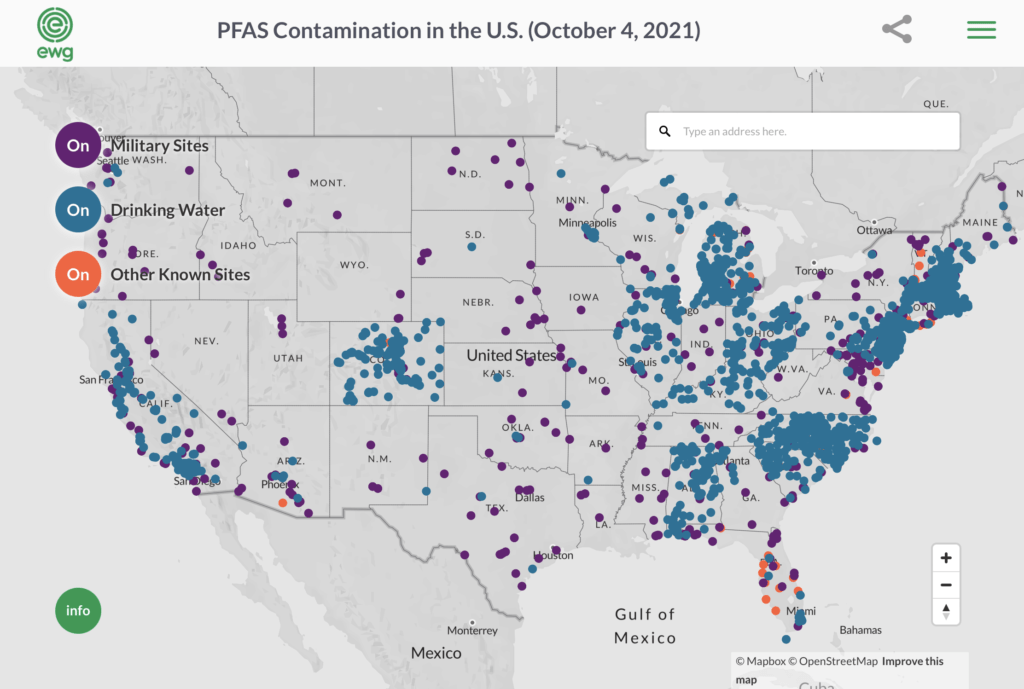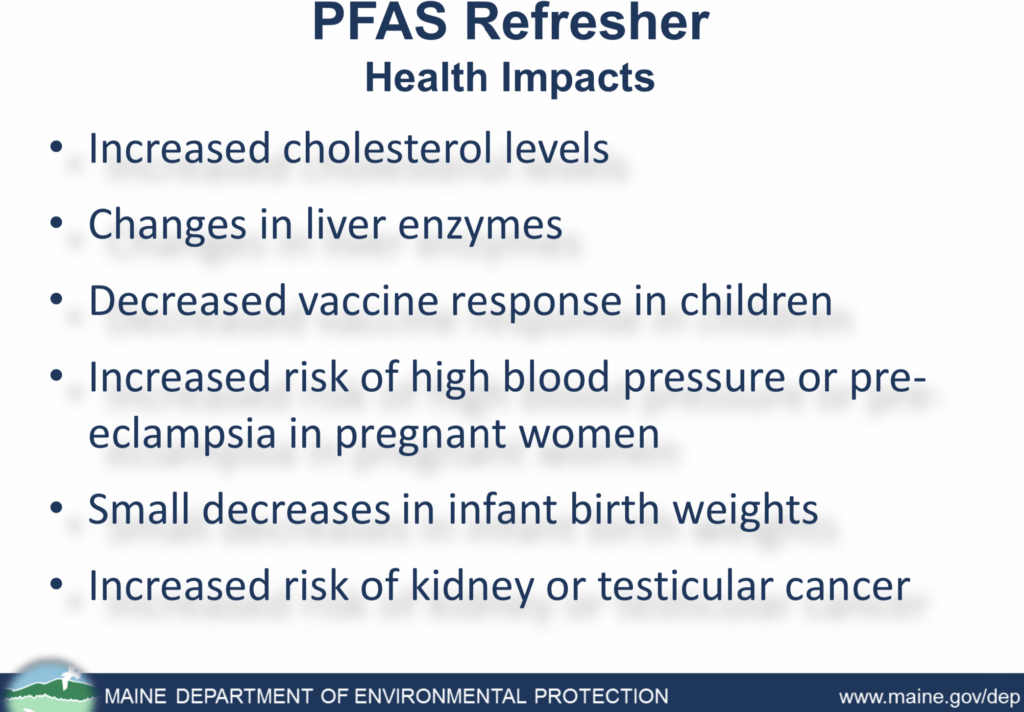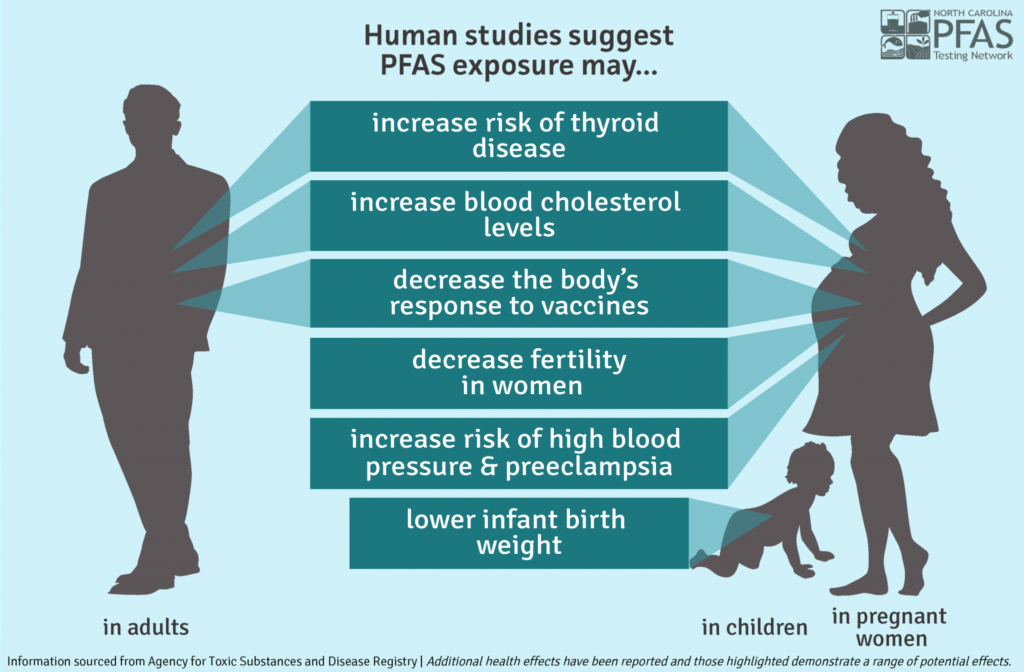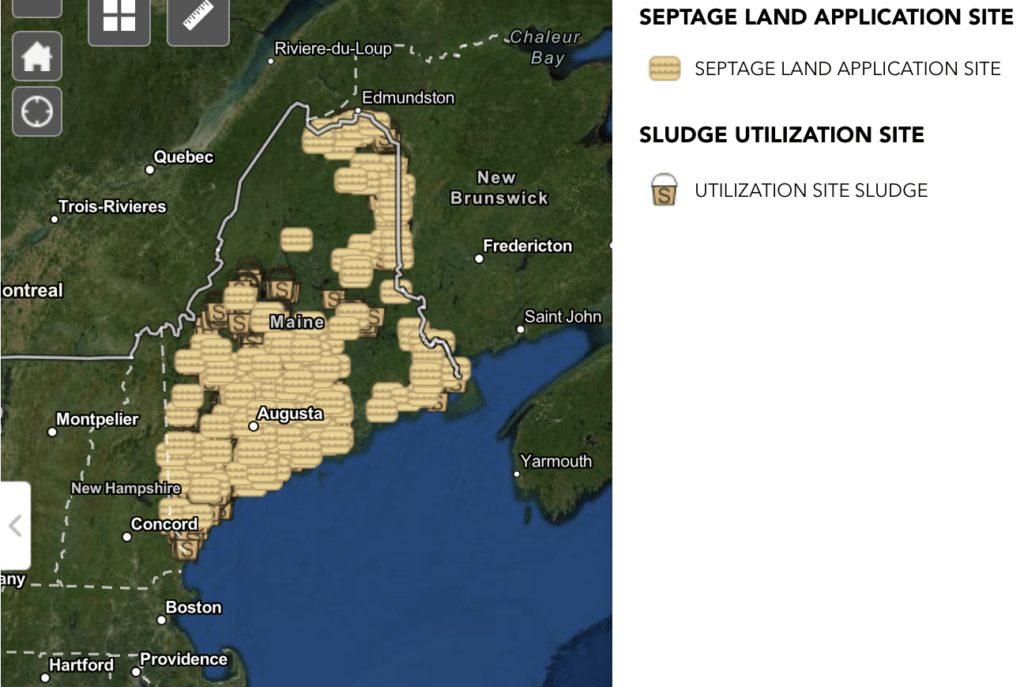Just this February 2023, Costco shelves were lighter as Irish Kerrygold, an all-natural butter from grass fed cows, were pulled due to a new California law: Assembly Bill 1200, which went into effect 1 Jan. It has to do with banning all plant fiber-based food packaging that contain PFASs that are either intentionally added, or present at levels exceeding 100 ppm total fluorine (1).
Back in 2019 I wrote about ”forever chemicals”, [PFAS, PFOA, PFWHAT?], and expressed my concerns about that family of PFAS chemicals were leaching into our food, water, and soil. Now, several years later, we are hearing more about these chemicals, both bad news and some very “it’s about damn time” news.
—**—

The Start of the PFAS Story
Who Knew, When
The PFAS family of chemicals were created in the 1930s by 3M and DuPont companies to make things “resistant” to grease, fire, water, stains and more. This was a time of little regulation compared to today. The public, and presumably the governmental agencies, were unaware of the danger of these chemicals.
However, secret studies and internal company memos reveal (2 2019; 3 2019):
- As far back as 1950, studies conducted by 3M showed that PFAS chemicals could build up in our blood.
- By the 1960s, animal studies conducted by 3M and DuPont revealed that PFAS chemicals posed health risks. 3M and the USA Navy develop “aqueous film-forming foam”, a PFOS + PFOA containing firefighting foam linked to animal and human liver damage.
- By the mid-1970s, 3M knew that PFAS was building up in Americans’ blood.
- In the 1980s, both 3M and DuPont linked PFAS to cancer and found elevated cancer rates among their own workers. The USA Navy finds that these chemicals have “adverse effects environmentally” and kill aquatic life. DuPont discovers that PFOA passes from a pregnant mother to child via the umbilical cord.
- In the 1990s the EPA and 3M find that PFOS contamination is appearing at blood banks around the country.
- In 1998 they alerted federal or state regulators about their findings.
Industries
NIEH reports that 4,700+ PFAS chemicals exist, which seems to be an ever increasing number as industry invents new forms of this type of chemical.
- Aerospace + Automotive
- Construction + Electronics
- Firefighting + Medical
- Military + Paper Mills
- Waste Companies + Farms
- Many processing or manufacturing plants (making tp, dental floss, etc.)
So there are just some obvious products that we should expect to contain forever chemicals, like flame retardant, but they are in a lot more products than one would think is obvious (2), such as:
- Paper packaging yes, but more than that it is in microwave popcorn bags and takeout packaging (including wrappers, bags, bowls, etc.)
- Stain-resistant carpets, rugs, and furniture, and even sprayed-on stain resisters.
- Non-stick cookware.
- Outdoor gear with a “durable water repellent” coatings.
- Personal-care products made with Teflon™ or containing ingredients with “fluoro” or “perfluoro”, dental floss and a variety of cosmetics, including nail polish, facial moisturizers, and eye make-up.
- Specialty items: ski wax, cleaners, toilet paper, dental floss, and all sorts of industrial or manufacturing applications.
- Baby products: bottles, cups and pacifiers all of which they suck on (4). Here is a site that lists non-toxic baby stuff: BecauseHealth.
They are in Everything
By this heading I mean food, these chemicals are in our soil, waterways, and air. They are in us and the food we eat. In February 2023 Michigan released a press notice that Community anglers found toxic PFAS at high levels in 12 species of commonly-consumed fish, putting subsistence anglers at elevated risk.

Medical Research Says PFAS Bad
NIEHS (2022) The research conducted to date reveals possible links between human exposures to PFAS and adverse health outcomes. These health effects include altered metabolism,5 fertility,6 reduced fetal growth and increased risk of being overweight or obese,7 and reduced ability of the immune system to fight infections.8

ScienceDirect (2021) shows a link between forever chemicals and pancreatic cancer. This research notes: Perfluorooctanoic acid (PFOA) was classified as a possible carcinogen for humans and that in vivo studies have reported that PFOA might lead to hepatic, testicular and pancreatic toxicities and cancers.

AACRJournals (2018) Perfluorooctanoic acid (PFOA), a chemical widely used in consumer and industrial applications, has been shown to induce pancreatic acinar cell tumors in rodents through a yet to be determined mechanism. In humans, epidemiologic studies have linked PFOA exposure to adverse chronic health effects including several types of cancer. Importantly, they document that PFOA has been detected in essentially all of the American population, with mean serum levels close to 4 ng/ml and a predicted half-life of ~ 4 yrs.
NCBI (2015) exposure to PFASs are associated with increased thyroid hormone levels in adult females.
—**—

There is a Nationwide PFAS Sludge Problem
This Story is about Maine
Maine has a Department of Environmental Protection (DEP), and from the 1970s to early 2000s, under their licensing, they promoted to farmers that they could obtain good sewage sludge for use as a fertilizer for their fields.
Unfortunately, the biosolids they approved for distribution contained concentrated PFAS chemicals, and their use wound up contaminating unknown quantities of water, soil and air.
But worse, even after acknowledging medical concerns with forever chemicals, that have been transmitted via that sewage sludge to waterways, farms and subsequently crops and livestock; DEP continued to say that PFAS not a hazardous waste (1, bolded text is mine). Frankly, I find that statement amazing. They continued:
- PFAS has not yet been designated as a “hazardous substance” under the federal Superfund law so DEP is using that definition, not the common understanding.
Under that belief, DEP (2019) developed some restrictions for spreading sewage sludge on farmland. But permitted its use, if the sewage sludge and clean soil’s PFAS levels were less than state limits. So, it was essentially okay to contaminate, a little bit, any uncontaminated soil. And worse, DEP declared that both fields and home gardens could use the sewage sludge as part of compost.
So Maine’s DEP, became an agency with a toxic legacy, as one writer noted.
Maine’s PFAS Sludge Problem
In general, sludge is thick, mud-like sewage, or industrial waste. Often, this is a by-product of a dairy farm’s wastewater treatment process, and copious amounts are applied to agricultural land as organic fertilizer for crop production (9). SpectrumLocalNews writes some of the worst PFAS contamination was in Maine (2021) and it was linked to sludge from paper mills that used the chemicals in protective coatings, but almost all biosolids tend to contain at least low levels of PFAS.

Sewage plants usually cleaned up industrial and household wastewater up to governmental “clean” standards, so it could be put back into the environment. Some of the solid “sludge” left behind from the treatment process could be processed even further, to be good enough to become compost, or fertilizer, that are named biosolids. Now truthfully, this sludge could become good quality fertilizer (especially if from organic farms). However, in 2019 TheIntercept reported documents showing that all the sewage sludge tested that year by Maine’s DEP was found to be contaminated with PFAS chemicals.
Since then, SpectrumLocalNews (2022) writes that state scientists in Maine are beginning to test for toxic chemicals called PFAS on hundreds of farms that may have been spread decades ago with fertilizer made from sewage sludge. They reported that testing all of the sites would take years. But even with the amount of testing done so far, it has already upended the lives of some farmers who’ve learned their land and water may have been contaminated long before they bought it, causing uncertainty for their products, their health and the future of their businesses.
State Governmental Response Ramping UP
SpectrumLocalNews wrote that the USA government asked all domestic industries to “voluntarily stop” using PFAS in the early 2000s. Unfortunately, even if they had done this, and I could not find data, it seemed clear that new and old contaminations were becoming a major problem for potable water, around landfills, near factories and military sites that use the chemicals, and more. PFAS is not yet subject to any enforceable federal regulations, and a federal health guideline level for the chemicals is much higher than most states and researchers have deemed safe.
But things are changing, another California law effective 2023, AB 652, will ban the sale and distribution of new children’s products containing PFAS, requiring the use of the “least toxic alternative” according to BloombergNews. In fact, NCSL reports, California, Colorado, Indiana, Maryland, Michigan, New York and Wisconsin enacted legislation regulating PFAS in firefighting foam and firefighting equipment. New York also established requirements for consumer notices for the use of PFAS and other chemicals in children’s products.
Waste Industry Fighting Back
The Waste Industry was and continues to be an interested party in this matter. For instance, they have been complaining that biosolids were filling up landfills to the point of crisis. Sludge was filling up the landfills to where there was no more room. But let’s be clear, the Waste Industry makes money selling sludge marketed as fertilizer to farmers. This of course saved land fill space so they could accept additional waste, and make more money.
The waste industry group, North East Biosolids and Residuals Association, has been noted as pushing back against efforts to regulate PFAS in sludge. They argued that most biosolids are not really contaminated enough, to pose an “unacceptable risk” or merit the cost of intervention.
A bill was introduced last year (SunJournal) to close loopholes, and just ban the use of sewage sludge as fertilizer. Meanwhile, the state of Maine’s task now seemed to be primarily testing all the sites that applied for the use of free sewage sludge. They are testing key agricultural areas, like where shellfish are harvested, the soils at farms, and lots of wells and waterways.
—**—
But More, It is a Farm, Families, and Food Issue
Songbird Farms
The WaPo released a story recently, telling of a young family trying to live a good life by farming organically, in a wonderful setting of Maine farm lands and forests. They named their farm Songbird Farm and lived a healthy life, had a child, and planned out the seasons on their little organic farm.
But their idyllic life as farmers was cut short, dreams ruined when their land was found to be poisoned with ”forever chemicals”; their crops, local wildlife, and their own bodies were contaminated. The newspaper wrote: they had PFAS levels 250 times greater than the average American, higher even than some industrial workers. Now their future economic status, and their health would be in doubt.
- NIEHS; One report by the Centers for Disease Control and Prevention’s National Health and Nutrition Examination Survey (NHANES) found PFAS in the blood of 97% of Americans. A more recent NHANES report suggested a reduction in blood levels of PFOS and PFOA since their removal from consumer products in the early 2000s. However, the number of new PFAS chemicals appear to be increasing, and exposure is difficult to assess.
All of this misery was due to a previous farmer who agreed in the 1990s to accept free sewage-based sludge to use as fertilizer for their fields. The state government agencies assured him the fertilizer was safe to use.
The new owners did the right thing, and had everything tested to confirm the situation. Then they stopped selling the food grown on their land, on their website they have a statement describing the situation.
Maine’s department of environmental protection (DEP) told the Songbird Farms that pancreatic cancer wasn’t linked to PFAS despite the studies showing a correlation (10). So I take this to mean governmental officials are following industry lobby talking points, although “correlation” is not the same as “causation.”
TheGuardian (2022) reports that public health advocates say Songbird Farms is just the “tip of the iceberg” as can be seen from the maps above. They wrote that Maine faces a brewing crisis stemming from the use of biosolids as fertilizer. The state has begun investigating more than 700 properties for PFAS contamination. Few results are in yet but several farmers’ independent testing revealed high PFAS levels, and statewide contamination has disrupted about 10 farms. However this number seems low, and farmers admitted to The Guardian that some hid the contamination of their soil, water, and crops due to fears of economic ruin.

Stoneridge Farm
Stoneridge Farm, a small dairy farm ~100 miles south of Songbird Farms, found out In 2016, that sewage sludge and paper mill waste were used as fertilizers on their land, and had probably contaminated their cows and milk.
Unfortunately, Stoneridge Farm would up killing most of their animals in 2019, as they were unusable for meat production and presumably the farmers could not afford to keep them. Along with economic ruin, the family started showing significant health problems, which they blamed on the contamination. In 2019 they were in dire straits, surviving with difficulty and the help of social services and friends.

The McCormick’s Farm
In February 2022 a local news outlet reported that the McCormick farm (Jackson, Maine) found forever chemicals on their land, specifically in their potable water.
The McCormick’s bought their land in 2012, and set about building and growing a farm, raising a significant amount of food from their own beef, chicken and produce. In 2014 they had their water tested, and it came back clear and they continued with their lives and expanding their family.
With one child, and one on the way, they found their water was indeed contaminated. The husband reportedly said, we got the results back from an accredited laboratory with the Maine DEP that we had significantly higher levels than the state’s standards which immediately snowballed into a lot of ‘what ifs’ and ‘what’s gonna happen if our soil and food comes back contaminated after the testing’s done, then there’s a long term problem of what’s going to happen to this land, what do we do?

New Beat Farm
For 10 years they had been working their small 94 acre farm to grow organic vegetables and hay for animals, only to find out the farm was contaminated with PFAS chemicals. Much of the land became unusable for growing food, so on the contaminated areas they turned to growing flowers.
The farmer was quoted in NewsCenterMaine as saying, we pulled our crops off the market and started drinking bottled water, and even refrain from giving baths to our 19-month-old because we were afraid we wouldn’t be able to keep her from drinking the tub water.
Grostic Cattle Company
While Maine is not alone in having PFAS contamination, the other state that popped up in my research was Michigan. ABC reported in January 2022, Beef produced at a small Michigan farm was found to contain toxic “forever chemicals” after the cattle were fed crops grown with fertilizer made from contaminated wastewater biosolids, state officials said Friday. But what caught my eye was this statement: a consumption advisory issued by state agencies stopped short of a recall, noting there are no government standards for the substances in beef.
This farm came under scrutiny due to a 4-year governmental investigation of sewage sludge and where it might have been used as cropland fertilizers. Meanwhile, during this time, the owners of this small 300-acre farm, with ~120 cows, continued to sell their meat products to individual customers at farmer markets, and to schools for lunch programs. The owners expressed surprise at the situation they now find themselves in, for their family had been operating their farm for 100+ years.
—**—

Resources + News + Hope
[Made Safe] Personal care products certifed PFAS free. A good link to use if you are concerned.
May 2022: EPA took a step to protect people from PFAS by adding five PFAS to a list of risk-based values for site cleanups. EPA’s action provides the Agency with tools needed for Superfund and other Agency programs to investigate contamination and protect people from these PFAS chemicals using the latest peer-reviewed science. Read more about these updates.
June 2022: Women who have high levels of “forever chemicals” in their bodies may be at a higher risk for developing blood pressure issues later in life, according to a new study that examined a group of women over the course of 18 years. See EPA on PFAS.
June 2022: EPA released four drinking water health advisories for PFAS, and announced that it is inviting states and territories to apply for $1 billion in Bipartisan Infrastructure Law grant funding to address PFAS and other emerging contaminants in drinking water, specifically in small and disadvantaged communities. Read more about the Health Advisories.
November 2022: Most people in the USA have been exposed to PFAS and have PFAS in their blood, especially perfluorooctane sulfonic acid (PFOS) and perfluorooctanoic acid (PFOA).
December 2022: 3M has announced it will exit per- and polyfluoroalkyl substance (PFAS) manufacturing and work to discontinue the use of PFAS across its product portfolio by the end of 2025. They state that their decision is based on: the European Union plans to potentially restrict all PFAS by 2025; the EPA has plans to place limits on PFAS in drinking water at current detection limits; and other regulatory agencies are considering similar changes in Canada, Australia, and Asia, are increasingly active on this topic. But also, they state that customers, consumers, and investors are increasingly interested in alternatives to PFAS.
March 2023: EPA has announced that they will be proposing the nation’s first drinking-water standards for PFAS chemicals to 4 parts per trillion; which is the lowest level at which they can be accurately measured and detected. Washington Post writes, that while the federal government has not chosen to regulate these chemicals, the EPA is considering a move to classify them as hazardous, separate from new PFAS drinking water limits. Both of these plans are currently under interagency review, so we do not know when they will be implemented.
Finally, significant changes. Just as news announces PFAS chemicals are in our TP and dental floss, and are showing up in newborns.
—Patty
—**—
Even though I speak about PFAS in this post as it it is a singular chemical, remember please that there are over 4,700 chemicals in the PFAS family according to ChemTrust, and the industry keep replacing regulated PFAS by other PFAS chemicals.